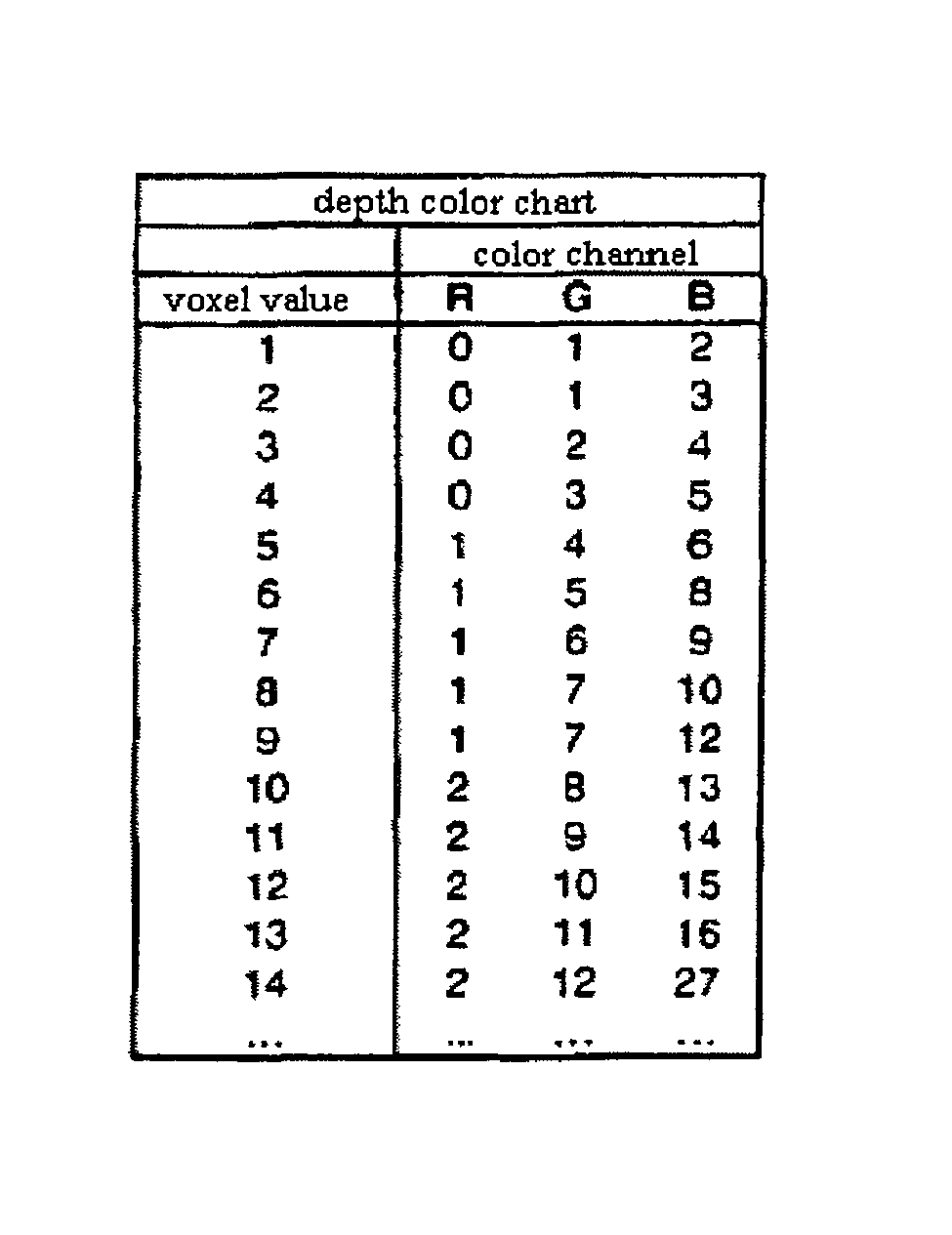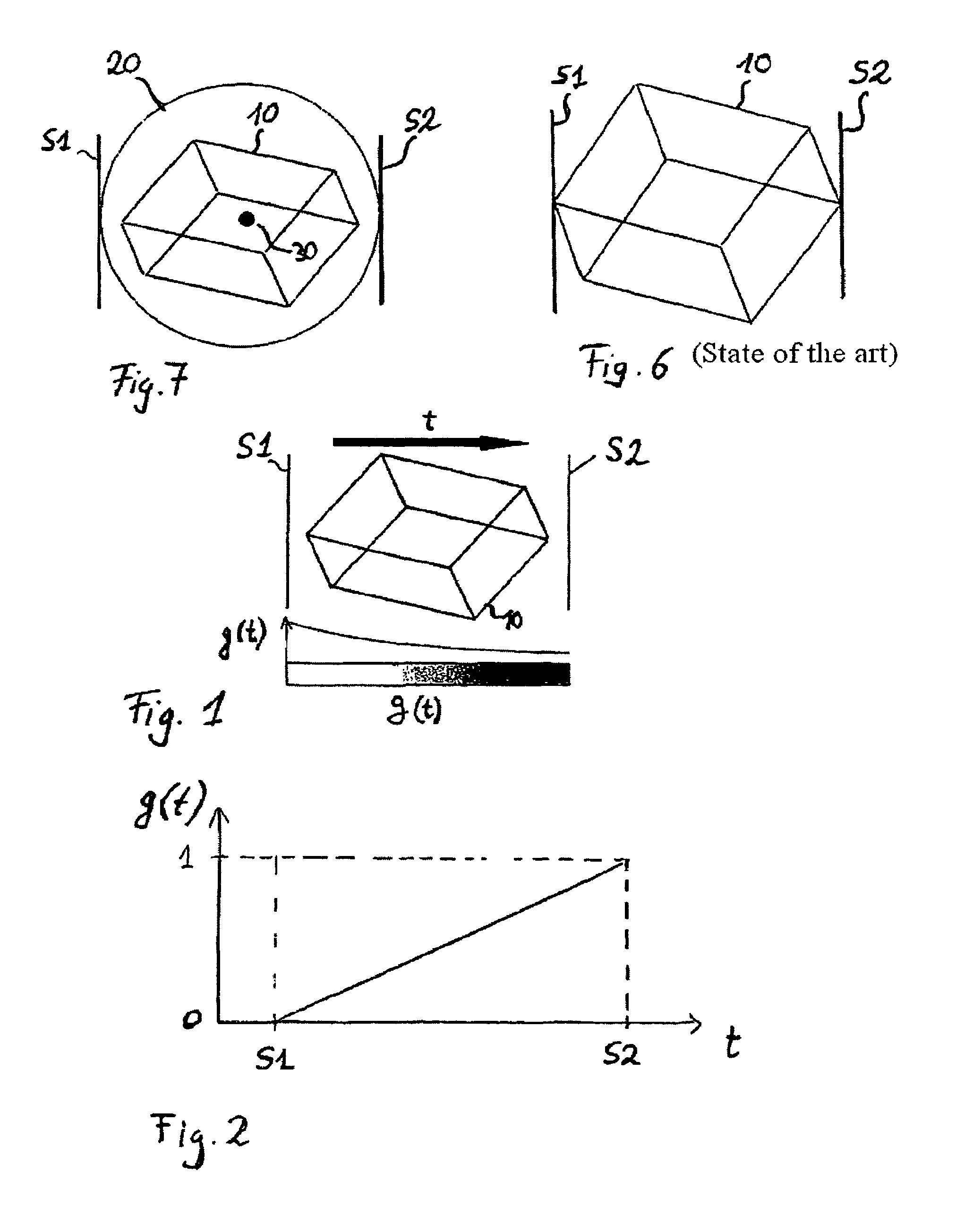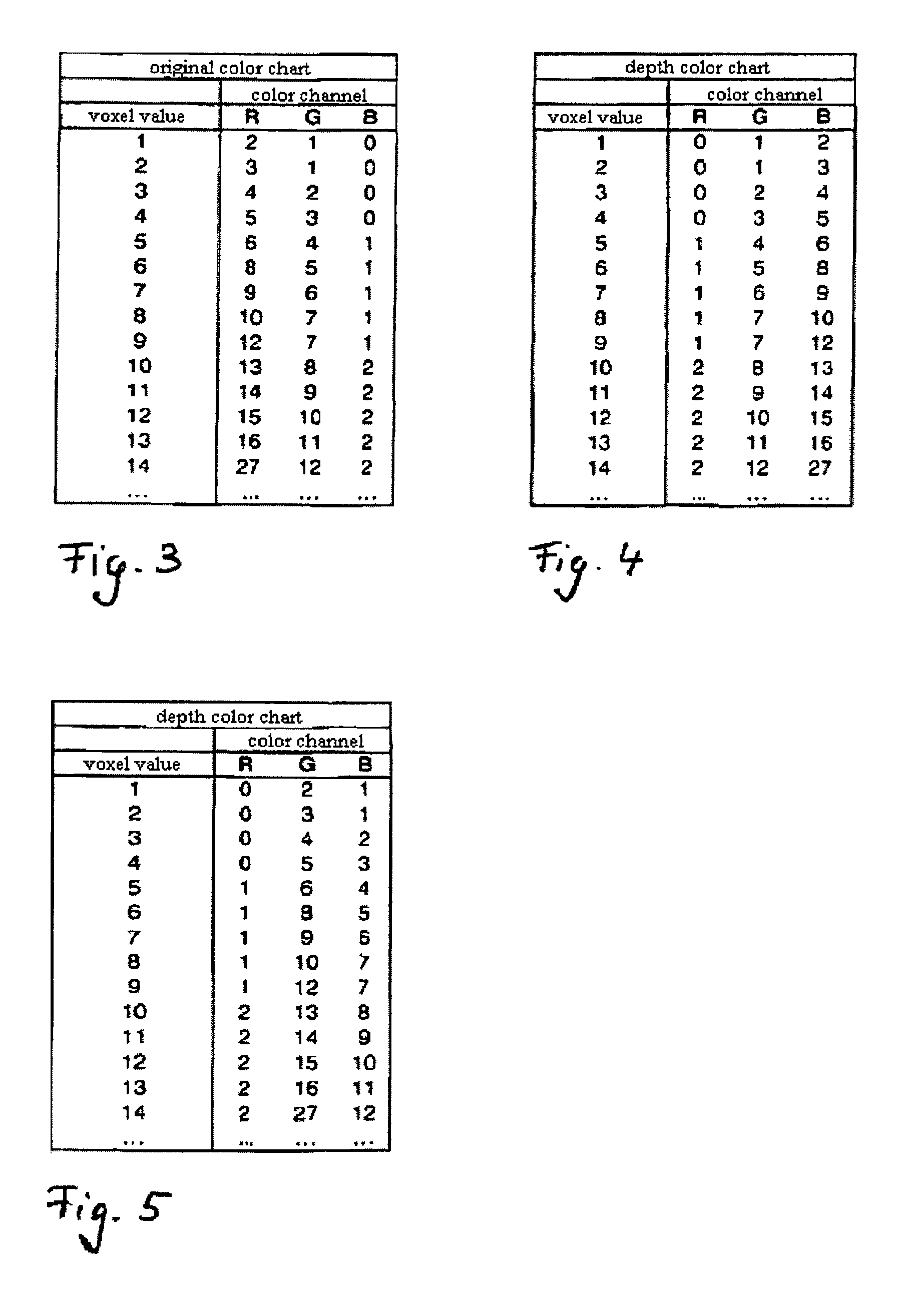Method and apparatus for representing 3D image records in 2D images
a technology of image data and 2d images, applied in the field of two-dimensional image representation of three-dimensional (3d) image data sets, can solve the problems of difficult to understand global positioning, difficult to represent these three-dimensional (3d) data, and irritating, so as to improve the depth of 2d images
- Summary
- Abstract
- Description
- Claims
- Application Information
AI Technical Summary
Benefits of technology
Problems solved by technology
Method used
Image
Examples
Embodiment Construction
[0060]FIG. 1 demonstrates the principles of depth cueing: A 3D image volume is rendered in a viewing direction t. For the representation of depth effects, a weighting function g(t) is used which, in this example, decreases exponentially. Furthermore, a starting plane S1 and an ending plane S2 are defined, which enclose the 3D image volume 10 and thus define the region where the impression of depth shall be generated. According to another embodiment, the weighting function g(t) may increase linearly between the starting and ending planes S1 and S2, as is represented in FIG. 2. The type of weighting function determines whether the depth effects shall be clearly visible only in greater depth or whether depth effects shall be recognizable already in the foreground.
[0061]FIGS. 3 to 5 represent two examples of permuting an original color chart. FIG. 3 shows an exemplary original color chart which assigns a color value for each of the three color channels R, G and B to each voxel value hav...
PUM
 Login to View More
Login to View More Abstract
Description
Claims
Application Information
 Login to View More
Login to View More - R&D
- Intellectual Property
- Life Sciences
- Materials
- Tech Scout
- Unparalleled Data Quality
- Higher Quality Content
- 60% Fewer Hallucinations
Browse by: Latest US Patents, China's latest patents, Technical Efficacy Thesaurus, Application Domain, Technology Topic, Popular Technical Reports.
© 2025 PatSnap. All rights reserved.Legal|Privacy policy|Modern Slavery Act Transparency Statement|Sitemap|About US| Contact US: help@patsnap.com



